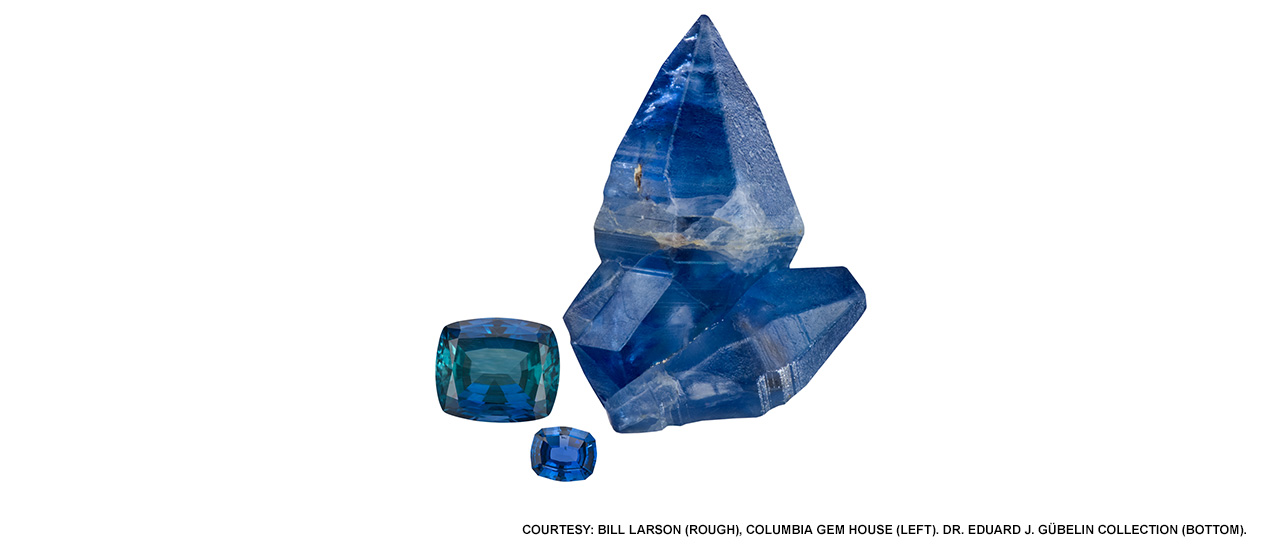September Birthstone

The September birthstone is sapphire – a gem that’s been cherished for thousands of years. Although the term sapphire usually refers to the blue variety of corundum (ruby is the red variety), this birthstone comes in a rainbow of other colors. Sapphires have been long associated with royalty and romance and are also said to symbolize fidelity and the soul. “Sapphire” comes from the Greek word sappheiros and blue sapphire is one of the most popular colored stones. Read on to learn more about the September birthstone, specifically its history and where it can be found.
Sapphire Birthstone
Sapphire Birthstone Meaning & History
The September birthstone has traditionally symbolized sincerity, truth, faithfulness and nobility. For countless centuries, sapphire has adorned royalty and the robes of the clergy. The elite of ancient Greece and Rome believed that blue sapphires protected their owners from harm and envy. Clerics of the Middle Ages wore sapphires because they symbolized Heaven. Ancient Persians believed the earth actually rested on a giant sapphire, which made the sky blue.
The September birthstone was reputed to have healing powers as well. Medieval Europeans believed that sapphire cured plague boils and diseases of the eye. The sapphire birthstone was also thought to be an antidote to poison.
Famous sapphires include the Rockefeller Sapphire, a 62.02 carat (ct) rectangular step cut stone that was unearthed in Myanmar (Burma). Acquired in 1934 by financier and philanthropist John D. Rockefeller, Jr. (1874–1960) from an Indian maharaja, the gem was recut and remounted over the years. The sapphire was first set as a brooch and later as a ring featuring two cut-cornered triangular diamond side stones. Perhaps the best-known sapphire in recent years is the 12 ct blue gem surrounded by diamonds in the sapphire engagement ring first worn by Princess Diana and then given by her son to Kate Middleton, now Duchess of Cambridge.
In addition to being the September birthstone, sapphire is also the gem commemorating the 5th and 45th wedding anniversaries.
Where Is Sapphire Found?
Kashmir, Myanmar (formerly Burma) and Sri Lanka are three historically important sources for the September birthstone. Significant quantities of the September birthstone have also been found in Australia, Thailand, Cambodia, Madagascar and the United States (Montana), among other countries in Asia and Africa.
Sapphires were discovered in Kashmir around 1881 when a landslide high in the Himalayas exposed a large pocket of velvety “cornflower” blue crystals. As the spectacular sapphires began to appear farther south, the Maharaja of Kashmir – and his army – took control of the new locality. From 1882 to 1887, thousands of large, beautiful crystals were recovered. The stones faceted from these crystals established Kashmir sapphire’s reputation as one of the world’s most coveted gems. Production has been sporadic since then, but auction houses occasionally sell fine pieces of Kashmir sapphire jewelry.
The Mogok area of Myanmar is another locale famed for producing the September birthstone. Jungle-clad hills hemmed by mountains make a dramatic landscape. Sapphire typically occurs alongside ruby deposits, but in much smaller quantities than its red counterpart. ”Burmese” sapphire, as it is still called by many, can possess a rich, intense blue hue, which has made it particularly prized. Myanmar is also a noted source of jadeite jade, spinel, zircon, amethyst, peridot and other fine gem materials.
For more than 2,000 years, Sri Lanka has been a source of the September birthstone. The blue and fancy-color stones mined from the alluvial gravels of this “jewel box of the Indian Ocean” can display remarkable brilliance and saturation. In addition, the island’s milky white “geuda” sapphires can be heat treated to a rich blue color.
Thailand is both a source of sapphire and a major cutting and treatment center. In dense jungle crossed by dirt roads, miners dig for sapphire in Chanthaburi Province. Sapphires from Myanmar and Cambodia often end up in Chanthaburi for cutting and treatment and are also sent to Bangkok, an important gem hub.
Sapphire Birthstone Care & Cleaning
The September birthstone is relatively hard, ranking 9 on the Mohs scale. It has excellent toughness and no cleavage, which is a tendency to break when struck. This makes it a great choice for rings and other mountings subject to daily wear.
Note, though, that sapphires are often treated to improve their color or clarity. Heat treatment is common – and the results permanent – so it is well accepted in the trade. Less common treatments such as lattice diffusion, fracture filling and dyeing may require special care. In some cases, the color induced by lattice diffusion is so shallow it could be removed if the stone was chipped or had to be recut. Fracture-filled and dyed sapphires can be damaged by even mild acids like lemon juice. Before you buy a sapphire, always ask if it is treated and by what method.
Warm, soapy water is always a safe choice for cleaning the September birthstone. Ultrasonic and steam cleaners are usually safe for untreated, heat-treated and lattice diffusion–treated stones. Fracture-filled or dyed material should only be cleaned with a damp cloth.
Now that you know all about sapphire, take a look at our Sapphire Buying Guide, as it can help you pick a stunning September birthstone for yourself or a loved one.